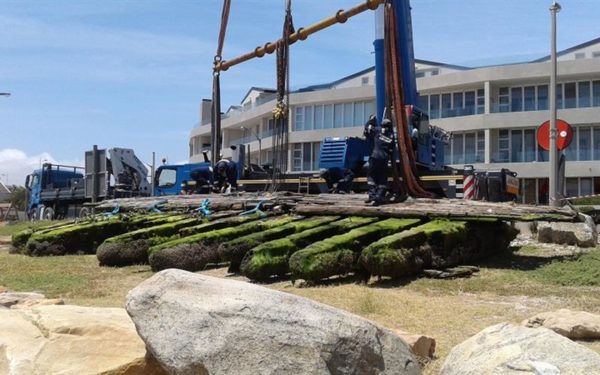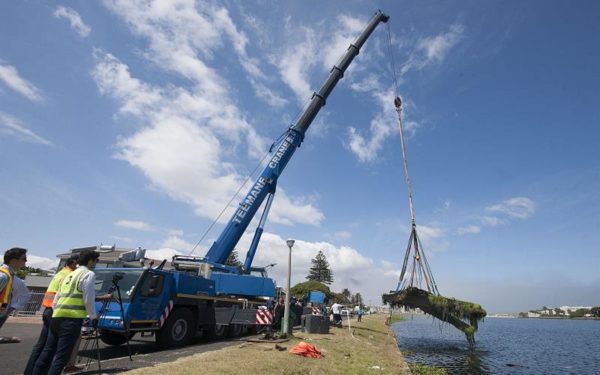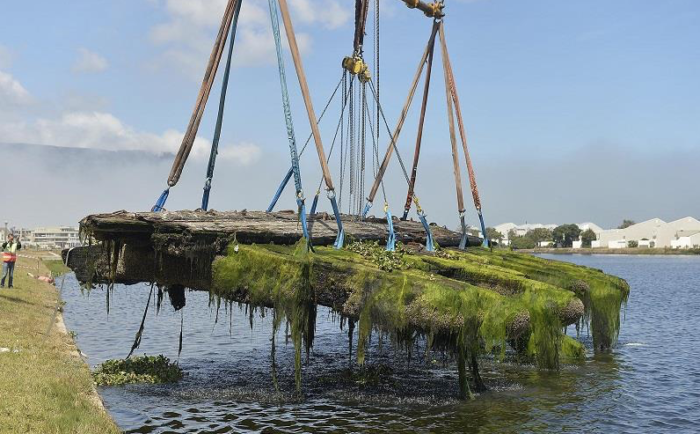A well-planned seven hour operation resulted in the successful relocation of the Commodore II shipwreck, a local historical treasure, from its original place in Diep River, Milnerton to a new home on City-owned land near the Lagoon Beach Hotel.
The relocation involved months of planning prior to it to find a suitable final resting place for the wreck and to ensure its safe transportation. A 130-tonne mobile crane with a spreader beam and sling lifted the 21 tonne, 14 metre-long and 6.8 metre-wide wreck, and the remains of the historic ship were luckily not damaged in the move.

The Commodore II was first uncovered during a winter storm in 2008. Her remains were considered for relocation due to the dangers the wreck posed to boats in the river and fears that the important historical discovery would be damaged.
It was then that it was decided she would be included in the work and budget for the rehabilitation and restoration of the historical Milnerton Wooden Bridge close by.
The Commodore II was built in 1919 in Seattle in the United States. She is believed to have featured in the 1935 American blockbuster film Mutiny on the Bounty, with Clark Gable.
Apart from this, she was also used to ferry coal during World War II. Shortly after, the grandson of President Paul Kruger bought the schooner and sailed to Buenos Aires in Argentina. It was here that her fortunes seemed to take a turn for the worse.
When going up the River Plate, the ship was grounded on a mudbank and the damage to the hull took 40 days to repair. The Commodore II also caught fire but fortunately it was extinguished quickly.
On her return, disaster struck again when the boat was hit by a heavy storm which left the mast, rigging and sails all severely damaged. Emergency repairs allowed the vessel and crew to safely reach Cape Town, where the ship was stripped and the remains left to the mercy of Milnerton’s breakers.

The bridge dates back to 1901 and was built by the Royal Engineers to provide entrance to a cannon trench. It was declared a National Monument by the old National Monuments Council on 17 July 1987.
Before carrying out the relocation, the City’s Environmental Management Department had to first obtain a permit from the South African Heritage Resources Agency (SAHRA), due to the fact the remains are more than 60 years old and considered by SAHRA to be worthy of conservation.
The Commodore II is seen as archaeological material under the National Heritage Resources Act (NHRA).
The public can now more easily view the remains of the shipwreck resting in its new location.
Pictures: The City of Cape Town






